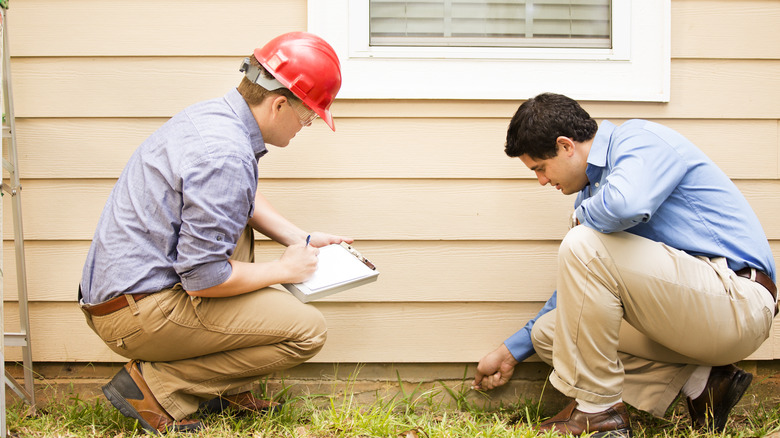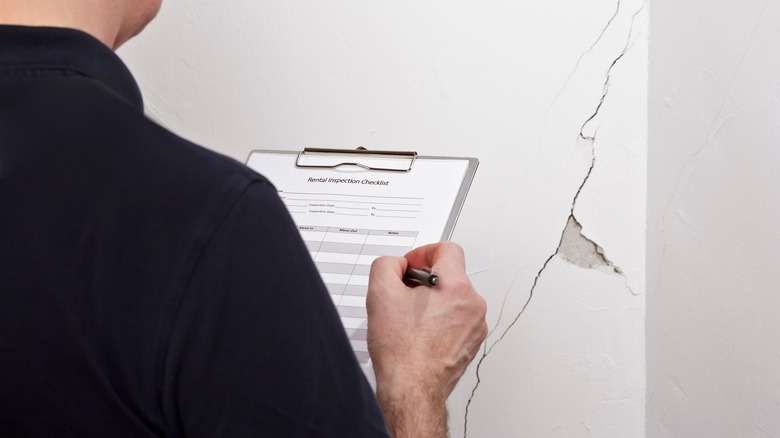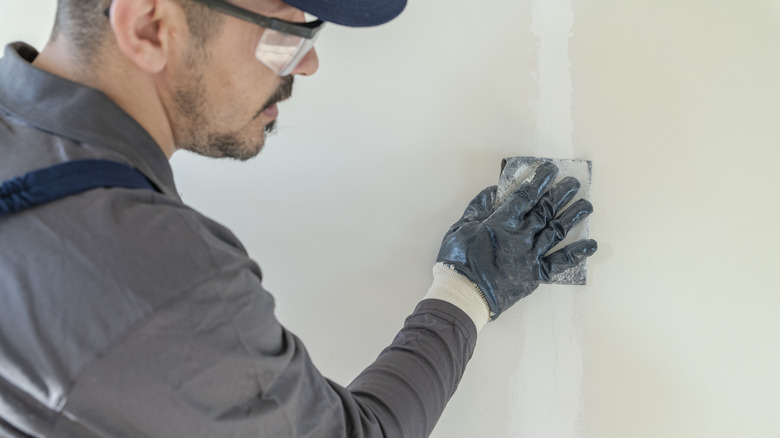The Helpful Tip That Could End Up Saving You Money On Cracked Wall Repairs
When you spot cracks snaking through your walls, it's easy to see them as just a bit of an eyesore. Yet, these fissures are often the first hint that something bigger, and potentially more troubling, is happening beneath the surface of your home. Tackling these signs of structural stress might feel daunting, especially with the price tag that can come with repairs. But don't worry, there's a savvy approach to navigating this issue; get an independent structural engineer on board. Foundation repair outfits are useful, no doubt, but their aim is also to sell their services, which can lead to suggestions for more complex and pricier fixes than you might actually need. Their solutions work but tend to lean towards the "better safe than sorry" end of the spectrum, pushing up the cost.
An independent structural engineer, though, isn't in the business of selling repair services. Their goal is to give your home a thorough check-up, pinpointing exactly what's wrong and what can be done to fix it. These experts offer an unbiased take, handing you an engineering report that lays out the best course of action. Armed with this report, you're in a strong position to make informed choices about fixing your home. It means you can sidestep the overkill solutions and focus on what will actually secure the stability and safety of your place. Ultimately, this approach keeps your costs down while ensuring the job's done right, making it a win-win for you and your home.
Understanding wall cracks and their implications
Cracked walls indicate various underlying issues, from benign to severe. Your house may develop some cracks as it settles into its foundation over time, but these are typically not a cause for concern. But if you're seeing cracks wider than a quarter-inch or ones that seem to be part of a larger pattern, it's time to take action. These could be red flags for bigger issues like foundation shifts or soil problems underneath your home. Things like too much moisture hanging around, drainage that's not doing its job, could also be the problem. Tree roots might be getting too close to your home, putting pressure on your foundation and leading to cracks. Don't forget, your house faces the weather's mood swings too, with materials expanding in the heat and contracting in the cold, which can also lead to cracking.
Figuring out why these cracks are appearing is super important. That's where an independent structural engineer comes into the picture. They're like the detectives for your home, taking a thorough look around to see if those cracks are just surface level or if they're symptoms of something more serious. This step is key because it shapes the repair strategy, directly impacting what needs to be done and how much it's going to cost. Once you have the engineer's report, you're armed with solid information. This way, you can focus on what's really necessary, making sure your home gets the right fix without unnecessary expenses.
Navigating the repair process with an engineer's insight
If there is a problem with your home's foundation or if the cracked walls have other causes, a structural engineer's report might suggest how to patch things up. There are various different fixes for cracked walls. Push piers are heavy lifters that plunge through the iffy soil until they hit the solid stuff. It's like anchoring your home to a rock-solid foundation it never had. Helical piers can also come into play. These are spirals that dig in when they're twisted into the ground. They work wonders for both the light frames and the heavy hitters of homes, especially where a gentle lift is needed. Think of them as the corkscrews that keep your house from tipping over.
For those homes wobbling on less-than-stellar soil, the report might also point to using anchors, carbon fiber straps, epoxy injections, and steel I-beams. Wall anchors pull your walls back into line, carbon fiber straps wrap them up tight for extra strength, epoxy fills in the cracks to keep out water, and steel I-beams prop up your walls like a trusty brace. All in all, your engineering report isn't just a list of problems. It's a roadmap to making your house solid again, guiding you through the repair methods tailored to your home's specific needs.


